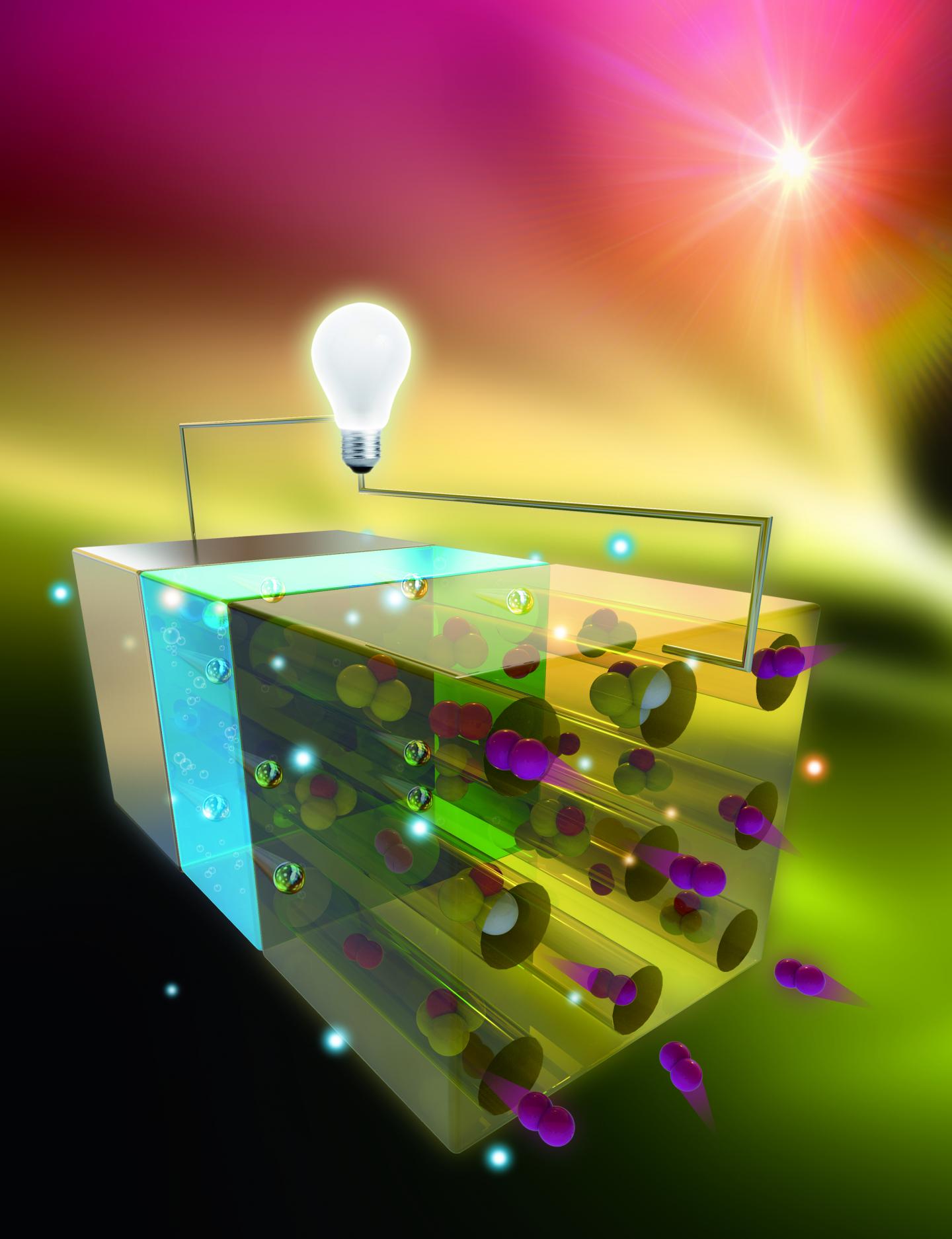
 |
| IMAGE: This is an artistic illustration of Zhang and colleagues' proof-of-concept experiment, which successfully implements a reversible nitrogen cycle based on rechargeable Li-N2 batteries with promising electrochemical faradic efficiency |
The "proof-of-concept" design works by reversing the chemical reaction that powers existing lithium-nitrogen batteries. Instead of generating energy from the breakdown of lithium nitride (2Li3N) into lithium and nitrogen gas, the researchers' battery prototype runs on atmospheric nitrogen in ambient conditions and reacts with lithium to form lithium nitride. Its energy output is brief but comparable to that of other lithium-metal batteries.
"This promising research on a nitrogen fixation battery system not only provides fundamental and technological progress in the energy storage system but also creates an advanced N2/Li3N (nitrogen gas/lithium nitride) cycle for a reversible nitrogen fixation process," says senior author Xin-Bo Zhang, of the Changchun Institute of Applied Chemistry, part of the Chinese Academy of Sciences. "The work is still at the initial stage. More intensive efforts should be devoted to developing the battery systems."
###
This work is financially supported by the Ministry of Science and Technology of China and the National Natural Science Foundation of China.
Chem, Ma and Bao et al.: "Reversible Nitrogen Fixation Based on Rechargeable Lithium-Nitrogen Battery for Energy Storage" http://www.cell.com/chem/fulltext/S2451-9294(17)30129-8 (Cell Press)

86-10-68597521 (day)
86-10-68597289 (night)

52 Sanlihe Rd., Xicheng District,
Beijing, China (100864)

